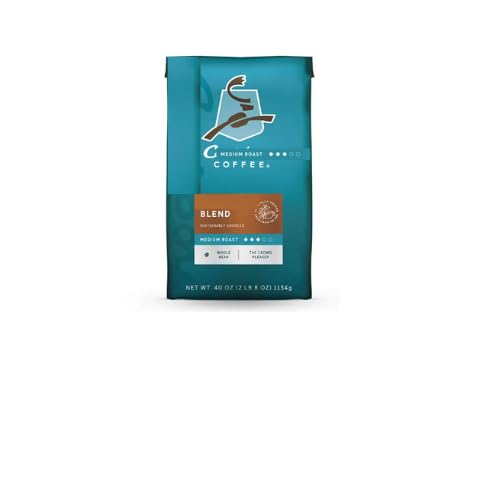
OneHundredCoffee is reader-supported, and some products displayed may earn us an affiliate commission. Details
Walk down any coffee aisle and you’ll see the same tug-of-war on every shelf: light roast smiling with words like “bright,” “citrus,” and “floral,” while dark roast flexes with “bold,” “smooth,” and “chocolate.” I’ve brewed both for years—at home, for friends who swear by cream-and-sugar, and for folks who sip black and talk about coffee the way people talk about wine. What I’ve learned is simple: neither roast “wins.” Each brings its own mood, flavor, and way of fitting into your day. The trick is matching the roast to how you actually drink coffee, not how a bag describes itself. This is your friendly, human guide to picking the roast that makes your mornings better—without the jargon, without the arguments, and with a lot of real-world brewing advice you can use today.
What “roast level” really changes in your cup
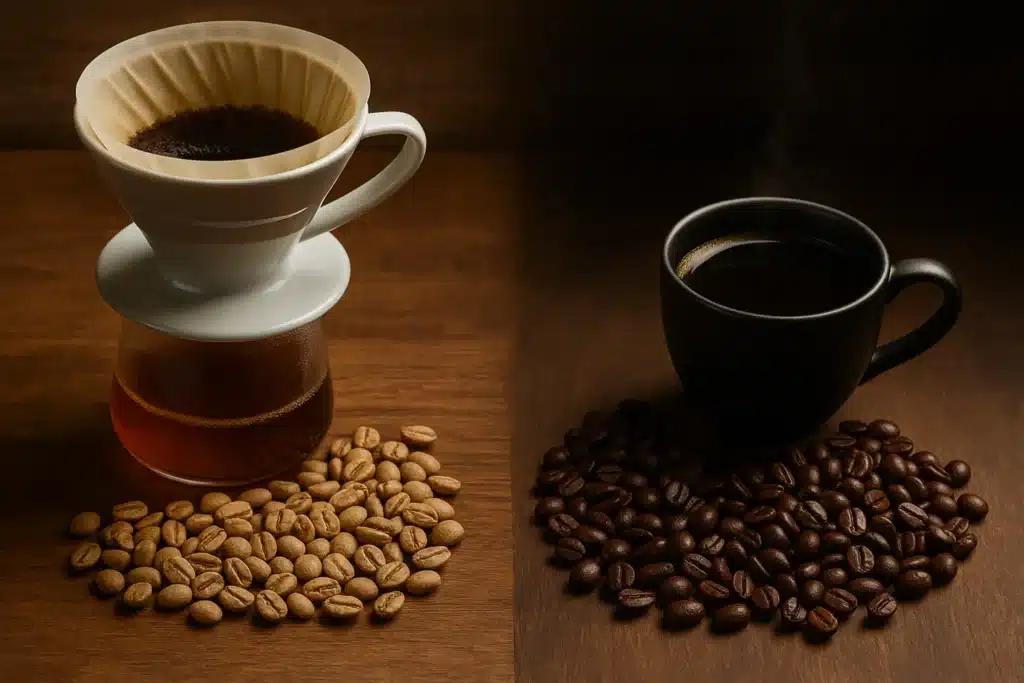
Roasting is a controlled transformation—taking dense green beans and heating them until sugars caramelize, acids evolve, and aromatics bloom. Light roasts are dropped earlier (lower end temperature) and preserve more of the bean’s original character; dark roasts ride the roast curve longer, developing deeper caramel, cocoa, and smoky tones. You feel that difference immediately:
- Light roast: Lively, layered, and origin-forward. Think stone fruit, citrus, honey, florals—flavors linked to where the coffee was grown and how it was processed. The mouthfeel is usually cleaner and lighter, with a silky or tea-like texture.
- Dark roast: Rounder, heavier, and roast-led. Chocolate, toasted nuts, molasses, caramel, and a hint of smoke often dominate. The body is thicker; the cup feels comforting and familiar, especially with milk.
This isn’t just flavor; it’s the way the cup sits on your tongue. Light roast = sparkle and detail. Dark roast = warmth and weight.
Best Light Roast Coffee Beans at A Glance
| Image | Product | Features | Price |
|---|---|---|---|
Best Light Roast Beans  | Price on Amazon | ||
Best Everyday Light Roast  |
| Price on Amazon | |
Best Everyday Light Roast 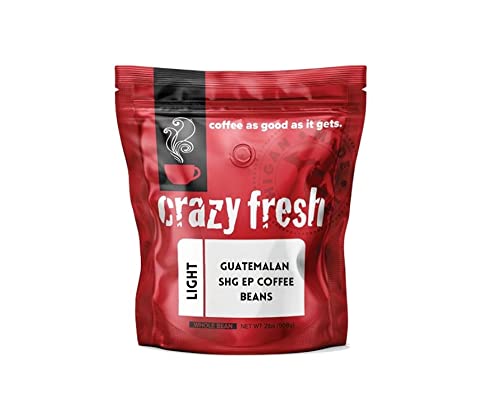 |
| Price on Amazon | |
Best Organic Light Roast 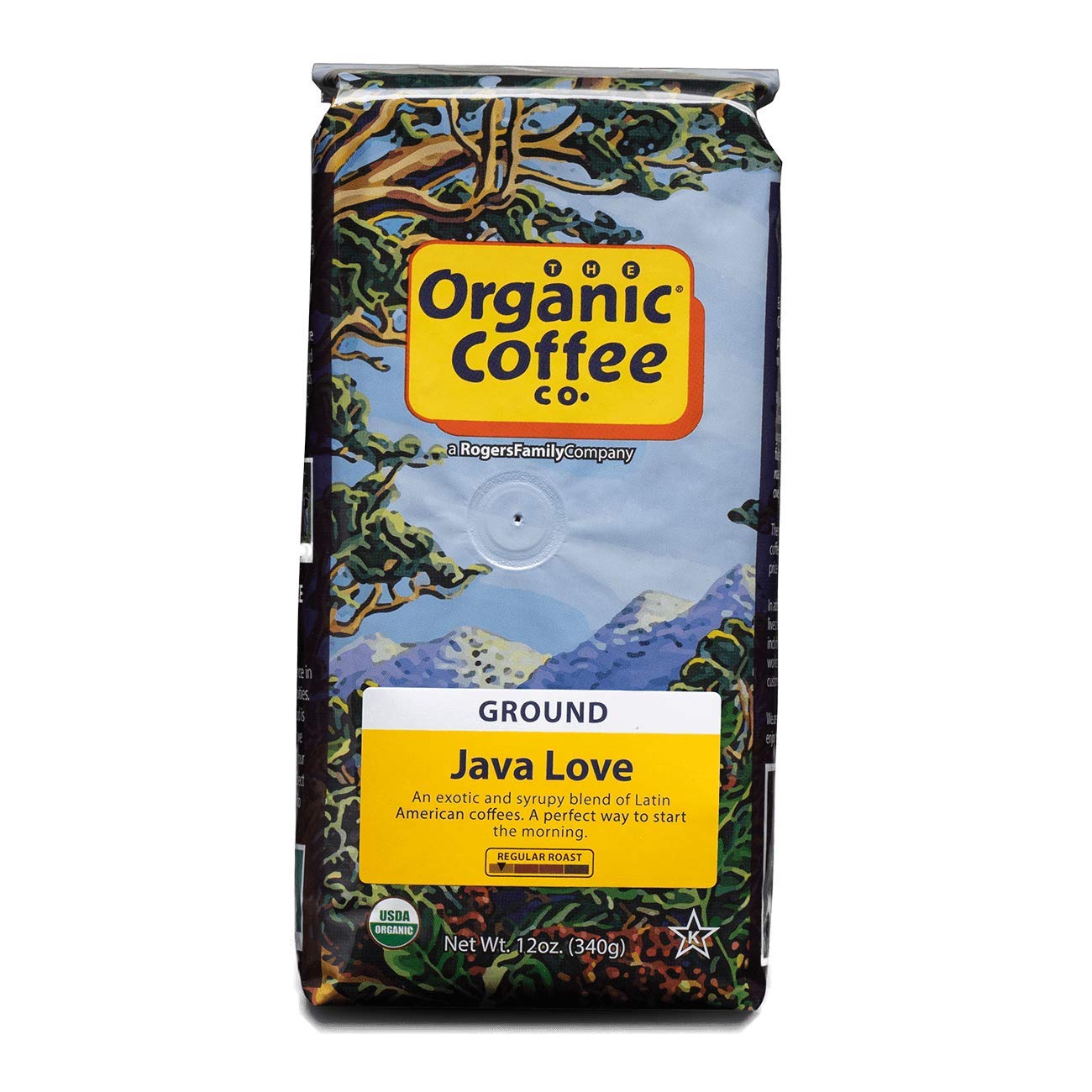 |
| Price on Amazon |
Best Dark Roast Coffee Beans at A Glance
| Image | Product | Features | Price |
|---|---|---|---|
Best Aroma  | Best Aroma
| Price on Amazon | |
Best Taste  | Best Taste
| Price on Amazon | |
 | Best quality coffee
| Price on Amazon | |
Best Brew  | Best Brew
| Price on Amazon |
Acidity vs. “acidity”: clearing up a confusing word
When coffee folks say “acidity,” they don’t mean stomach acid—they mean a pleasant, lively quality you’d notice in a crisp apple or ripe berry. Light roasts show more of this brightness. That doesn’t automatically mean “sour,” and it doesn’t automatically mean “tough on the stomach.” Sourness comes from under-extraction or mismatched brewing (too cool, too quick, too coarse). Many people who think they “don’t like light roast” end up loving it once they try a slightly hotter brew, a touch finer grind, and the right recipe.
If your stomach is sensitive, roast level can matter—but so does how you brew. Cooler water, coarser grind, and shorter contact time can make any roast feel gentler.
Caffeine myths: Does roast level make a big difference?
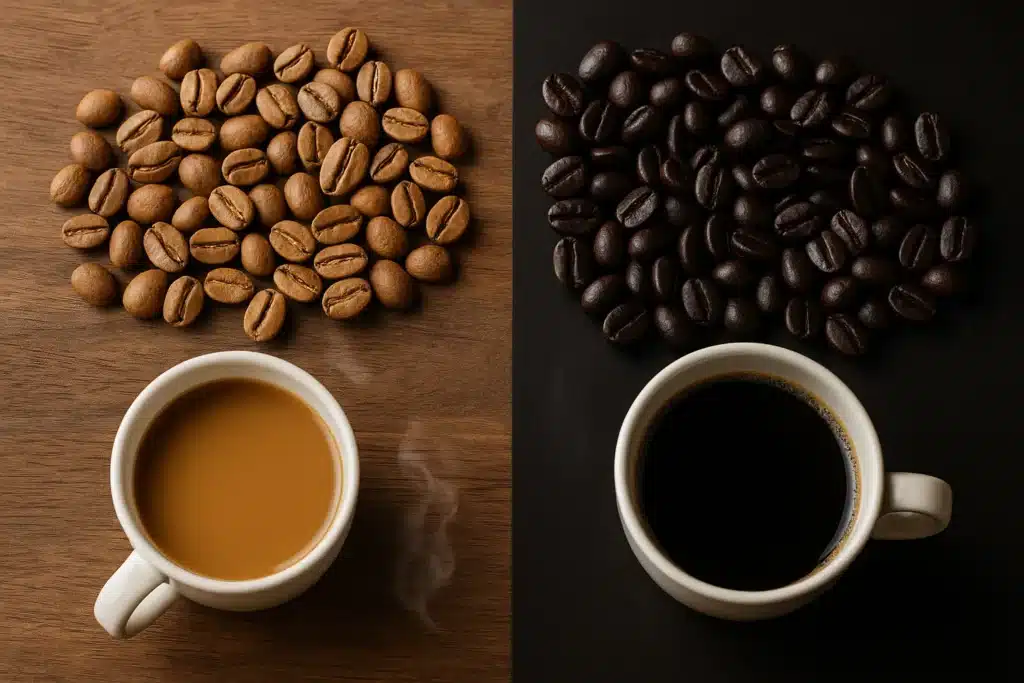
Short answer: not really, as long as you measure your grounds by weight. Dark roasts lose more moisture during roasting, so the beans look bigger and weigh less by volume. If you scoop with a tablespoon, you might accidentally use fewer grams with a dark roast and think it has “less punch.” Measure 18 grams of light vs. 18 grams of dark, and you’ll see that caffeine differences are minor compared to brew ratio, dose, and method.
Want more kick? Use a stronger ratio, pull a longer espresso, or brew a moka pot. Roast level won’t move the needle as dramatically as those choices will.
Flavor snapshots: how the same origin shifts across roasts
To really feel the difference, imagine the same Colombian coffee roasted two ways:
- Light: apple, caramelized sugar, orange zest, and a clean, sparkling finish.
- Dark: dark chocolate, toasted almond, brown sugar, with a heavier, syrupy feel.
Neither is inferior. They’re different experiences from the same starting point. Light is like a hi-res photo—more detail, more clarity. Dark is like a warm filter—smoother lines, deeper shadows, and cozy comfort.
Brew-method harmony: pairing roast with how you make coffee
You can brew any roast with any method, but some pairings make life easier:
- Pour-over / Automatic drip: Light roast shines when you enjoy clarity and sweetness. Dark roast will deliver a fuller, chocolatey cup with less fuss.
- French press: Dark and medium-dark do beautifully—thick, comforting body. Light roast can work too; just be mindful of extraction and consider a paper-filter finish to reduce fines.
- AeroPress: Flexible. You can coax syrupy sweetness from dark or a sweet, fruity clarity from light.
- Moka pot: Dark/medium-dark feels right at home—bold, chocolatey, and great with milk.
- Espresso: Medium-dark is forgiving and classic. Light roast espresso can be stunning—berries, florals, honey—but it asks for higher brew temps, tighter puck prep, and patience.
Quick, reliable recipes that actually work (and why)
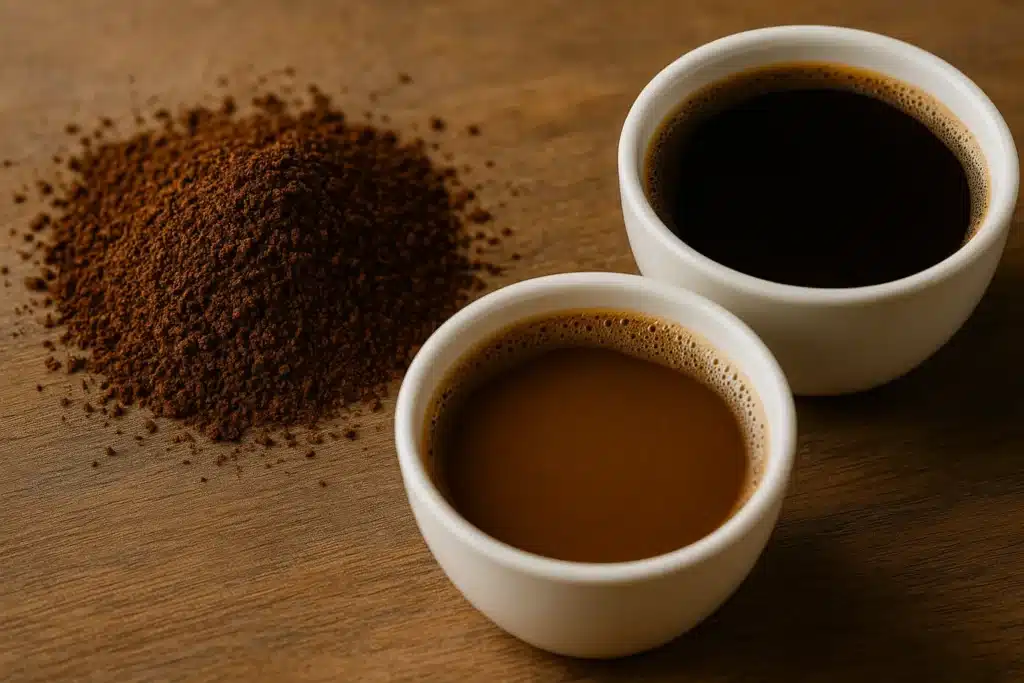
You don’t need a barista certificate—just a few anchor points.
Light roast — pour-over (V60 or flat-bottom)
- Dose: 20 g of coffee
- Water: 320 g (1:16) at 95°C / 203°F
- Grind: Medium (slightly finer than your usual “drip”)
- Flow: Bloom with 60 g for 45s, then two even pours to 320 g by 3:00–3:15
- Taste target: Sweet first, then fruit. If sharp, go just a notch finer (yes, finer), and hold temp.
Why it works: light roasts need energy to unlock sweetness; hotter water and adequate contact time prevent “sour” cups.
Dark roast — pour-over or drip
- Dose: 20 g of coffee
- Water: 300–320 g (1:15–1:16) at 91–93°C / 196–199°F
- Grind: Medium-coarse
- Flow: Gentle, limit agitation, total time ~2:45–3:00
- Taste target: Cocoa and caramel with a smooth finish. If bitter, coarsen slightly and reduce agitation.
Why it works: cooler water and a coarser grind avoid over-extracting the roastier compounds.
French press — comfort cup
- Dose: 30 g → 480 g water (1:16)
- Water: 92°C / 198°F
- Time: 4 min, stir, skim, press gently
- Pro move: Decant immediately to stop extraction.
Beginner-friendly espresso (18 g basket)
- Medium-dark: 18 g in → 36–40 g out in 27–30 s at 92–93°C
- Light: 18 g in → 42–46 g out in 30–34 s at 94–95°C
Tweak in tiny steps: 1–2 seconds of shot time or a 0.1–0.2 grind notch makes a big difference.
When your cup fights back: fast fixes for common problems
- Light roast tastes sour/sharp: Raise water temp 1–2°C, grind finer, extend brew by 10–20 s.
- Dark roast tastes bitter/ashy: Lower temp 2–3°C, grind coarser, pour gentler.
- Cup feels thin/watery: Increase dose (e.g., 1:15 instead of 1:16) or grind slightly finer.
- Muddy press: Let grounds settle, skim the surface, or finish through a paper filter.
Think “small levers.” One change at a time, taste, then decide the next step.
Freshness and storage: the unglamorous hero
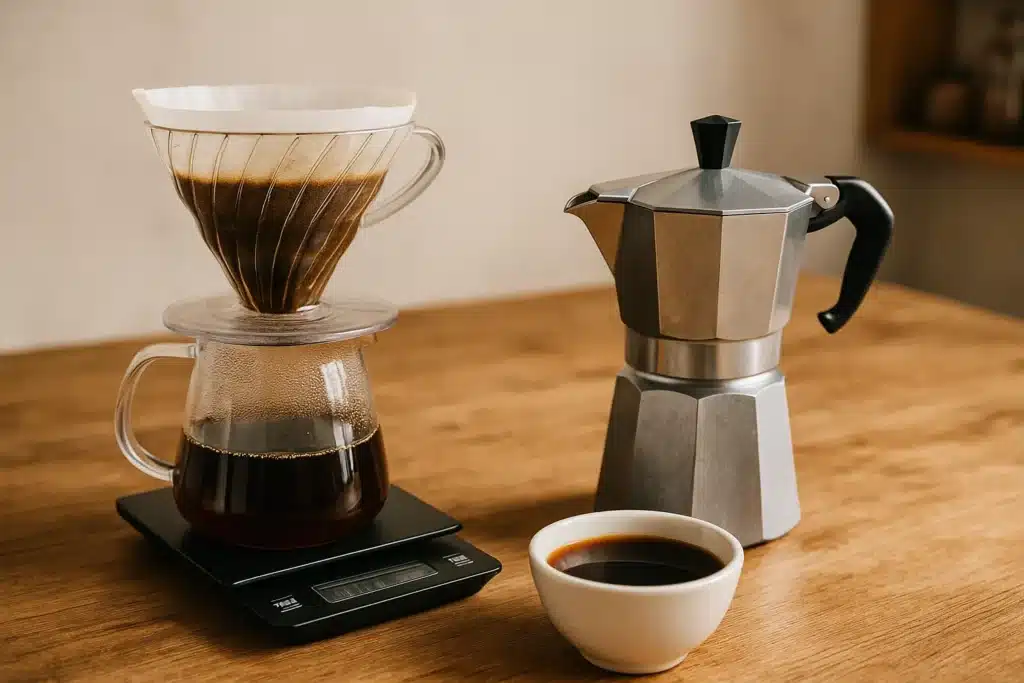
Light vs. dark won’t matter if your beans are stale, your grinder is struggling, or your bag sits open on the counter. A few habits that instantly upgrade any roast:
- Roast date > marketing: Aim to drink within 2–6 weeks of roast.
- Seal it: Opaque, airtight container, away from light and heat.
- Grind just before brewing: Even an affordable burr grinder beats pre-ground.
- Use decent water: Filtered water avoids “chalky” cups and extraction headaches.
- Bulk buyers: If you must buy big, split into smaller jars or poportions anddreeze single brews; thaw sealed.
Health & comfort: choosing the roast your body likes
There’s no universal “healthiest” roast. If coffee upsets your stomach, test variables in this order: water temp (down a bit), grind (coarser), contact time (shorter), then roast level (try medium or gentle dark). Also consider washed coffees over heavily fermented naturals if you’re sensitive.
With milk and sugar? Give dark its mome. nt
Milk loves chocolate. Dark and medium-dark roasts carry through dairy with confidence—mocha, caramel, toasted nut tones. Light roasts in milk can taste like berries-and-cream when dialed, but if the extraction is off, they can seem thin or tangy. If your daily cup wears milk and sugar, start with dark or a “comfort” medium-dark blend.
A week-long mini-experiment to find your happy roast
- Day 1: Brew a light roast and a dark roast side-by-side at 1:16 with the same water.
- Day 2: Hotter water and a touch finer for the light.
- Day 3: Cooler water and a touch coarser for the dark.
- Day 4: Add milk to both; note which sings.
- Day 5: French press or AeroPress versions for body comparison.
- Day 6: Try iced for each (flash-chilled pour-over or concentrated then diluted).
- Day 7: Choose your weekday go-to; keep the other for slow mornings.
One focused week will teach you more than months of guesswork.
Origin and processing: the “flavor compass” beyond roast
Roast is the volume knob. Origin and processing are instruments. Some quick guideposts:
- Ethiopia (washed): floral, citrus, honey—stunning as a light roast filter.
- Ethiopia (natural): berry-forward, winey sweetness—dessert-like as light.
- Kenya: blackcurrant, grapefruit, tomato-umami—vibrant and structured in lighter roasts.
- Colombia: balanced caramel and red fruit—versatile across roast levels.
- Guatemala: chocolate + citrus + spice—adaptable to medium/dark comfort cups.
- Brazil (natural): nutty, chocolatey—friendly for espresso at medium-dark.
Choose a roast to highlight what you love in the origin.
Budget, convenience, and reality
If you’re making three mugs before sunrise, a consistent medium-dark or dark roast in an automatic brewer is practical and satisfying—especially with milk. If coffee is your quiet ritual, a fresh light roast on pour-over can turn 10 minutes into a small tasting adventure. Neither is “better”—they’re different answers to different mornings.
The middle road: why medium roasts deserve more love
Medium roasts get overlooked in the light-vs-dark debate, but they’re the bridge most people can cross happily. Enough caramelization for body and sweetness, enough origin for interest, and easier extractions for beginners. If you’re stuck choosing, a well-developed medium roast is the friendliest starting point.
Best 5 selections
To feel the spectrum quickly, grab one bright, modern light roast, one balanced medium for everyday brews, and one cozy dark that loves milk. These are widely available on Amazon and give you a clean comparison without repeating the usual suspects:
Counter Culture Coffee – Hologram (Light-Medium)
A dependable “gateway” into lighter profiles: layered fruit and cocoa sweetness. Great in pour-over or drip when you want clarity that still feels comforting.
Who is this for?
Counter Culture Coffee is perfect for specialty coffee lovers who enjoy smooth, balanced blends with ethically sourced beans. The Big Trouble variety offers a nutty, caramel profile, ideal for espresso or drip. Whether you’re new to craft coffee or a seasoned aficionado, this brand delivers sustainable, fresh-roasted excellence in every cup.Verve Coffee Roasters – Sermon (Medium)
Lush, chocolate-meets-berry profile that behaves beautifully across methods. An excellent “house” coffee if your home has mixed preferences.
Who is this for?
Verve’s Streetlevel blend is for coffee lovers who crave a balanced and approachable flavor profile. Perfect for espresso or drip, it offers notes of fruit, chocolate, and caramel. Ideal for daily brewers who appreciate artisanal quality, this small-batch roast is a gateway to the world of premium third-wave coffee.Kicking Horse Coffee – Kick Ass (Dark)
Bold, full-bodied, and chocolate-forward with a hint of smoke—fantastic in French press, moka pot, or espresso with milk.
Who is this for?
Kicking Horse’s Three Sisters blend is ideal for those who enjoy smooth, balanced medium roasts. It’s perfect for French press, drip, pour-over, or espresso. With hints of chocolate, fruit, and a touch of smokiness, this organic and fair-trade coffee suits casual drinkers and connoisseurs looking for a dependable daily brew.Caribou Coffee – Daybreak Morning Blend (Light)
Gentle, sweet, and approachable. If you’re new to light roasts and want an easy daily driver, this is a friendly first step.
Who is this for?
Caribou Coffee Medium Roast is perfect for those who enjoy a balanced, smooth, and approachable cup. Crafted with Rainforest Alliance Certified beans, it’s ideal for everyday coffee drinkers who want rich flavor with no bitterness. Great for drip machines, grinders, and French press users seeking quality with eco-conscious sourcing.San Francisco Bay Coffee – Fog Chaser (Medium)
Smooth, slightly toasty, and balanced; a solid crowd-pleaser for automatic drip and large morning batches.
Who is this for?
San Francisco Bay Fog Chaser is for early risers who crave bold, energizing coffee. This medium-dark roast delivers rich flavor with smooth notes of chocolate and spice. Crafted for drip, pour-over, or French press, it’s ideal for anyone seeking a full-bodied, low-acid brew made from sustainable, premium Arabica beans.Pick two that contrast—say, Caribou Daybreak vs. Kicking Horse Kick Ass—and brew them with the same recipe. The roast difference will jump out immediately.
Troubleshooting by taste: a tiny field guide
- “Too sour/thin” (usually light roast): hotter water, finer grind, a pinch more dose.
- “Too bitter/harsh” (usually dark roast): cooler water, coarser grind, gentler pour.
- “Flat/boring”: stir/agitate a little more, or bump dose by 1–2 g per 300 g water.
- “Muddy/sludgy”: better grinder alignment, or filter finish for immersion brews.
Taste, adjust one variable, taste again. Keep notes. You’ll find your profile quickly.
I add milk, my partner drinks black—can one bag work?
Yes: aim for a balanced medium or a medium-dark blend that has chocolate sweetness without excessive smoke. You can nudge it toward either preference with brew choices: coarser and cooler for a smoother, milk-friendly cup; hotter and a hair finer for a black cup with a bit more structure.
Iced, cold brew, and summer routines
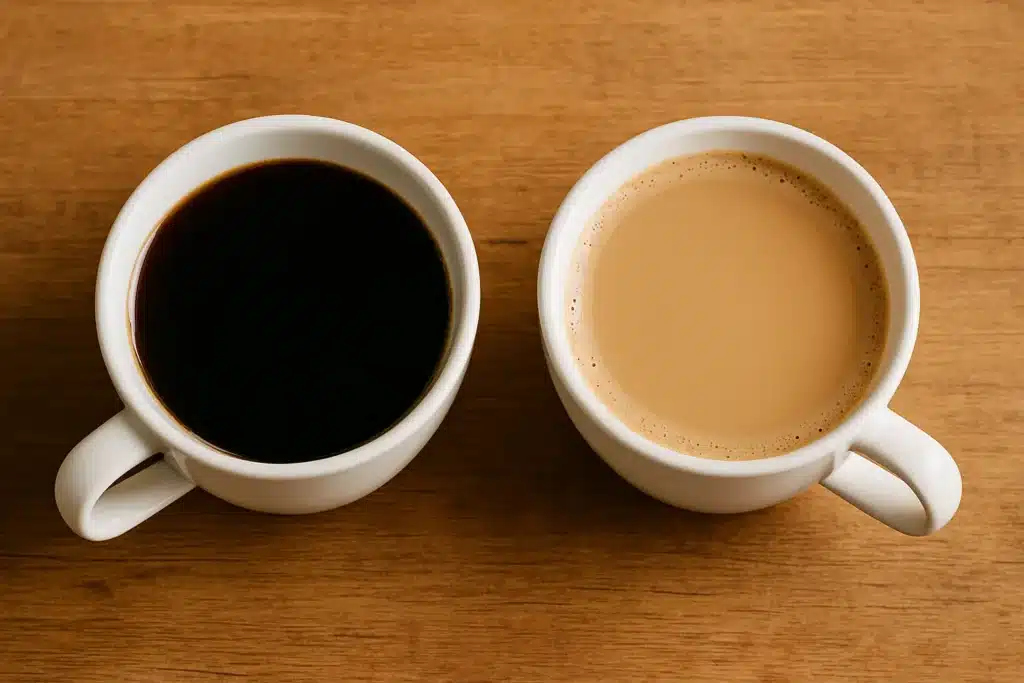
- Cold brew (12–16 hours, coarse): Medium-dark often shines—chocolate and caramel syrupiness that stands up to ice.
- Flash-chilled pour-over (brew hot over ice): Light roasts sparkle—fruit and florals become refreshing without heaviness.
- Espresso over ice: Medium-dark for chocolate-forward iced lattes; light for fruit-sparkle Americanos if you’re dialed in.
Water matters more than most people think..
If your coffee tastes dull, your water might be too hard; if it tastes sharp and hollow, it might be too soft. Filtered tap water or a simple pitcher system is a huge step forward. If you’re chasing perfection, look into simple mineral recipes, but you don’t need to go there to brew great coffee at home.
My honest, everyday answer to “Which roast is better?”

On autopilot weekdays, I reach for a medium-dark that I can brew half-awake and still get a chocolate-smooth mug that loves a splash of milk. On slower mornings, I treat myself to a light roast pour-over and let it cool just a little—those honeyed, fruity notes wake me up more gently than caffeine. Weekends, I’ll pull a medium roast espresso and split the shot: one small cappuccino, one neat espresso. The point is: I keep both roasts around because they match different moods, schedules, and cups.
Your decision is guiding one page.
- Drink it black and love clarity? Start light.
- Add milk/sugar most days? Start dark or medium-dark.
- Want one bag for everyone? Medium (balanced, chocolate-leaning).
- Espresso beginner? Medium-dark; easier to dial.
- Sensitive stomach? Try cooler water, coarser grind, shorter brew, then test medium/dark.
- Chasing “coffee shop” aroma at home? Dark in a French press or moka pot, or medium-dark in automatic drip.
- Chasing “wow, that’s fruity”? Fresh light roast in pour-over, hotter water, slightly finer grind.
Final sip
“Better” isn’t a trophy; it’s the cup you reach for without thinking. If bright fruit, florals, and a silky, clean finish make you smile, you’re a light roast person—especially with pour-over or a precise drip machine. If you want chocolate, caramel, and a mug that cozies up to milk, dark roast is your friend. If your household wants both? Meet in the middle with a balanced medium, and let brew tweaks tilt the cup either way.
Coffee is one of the few daily rituals that’s equal parts comfort and discovery. Keep one bag that makes mornings easy, and another that makes weekends interesting. Learn the small levers—temperature, grind, time—and you’ll find that “light vs. dark” becomes less of a fight and more of a playlist. Pick the next track for the day you’re having, and brew the cup that suits you.




